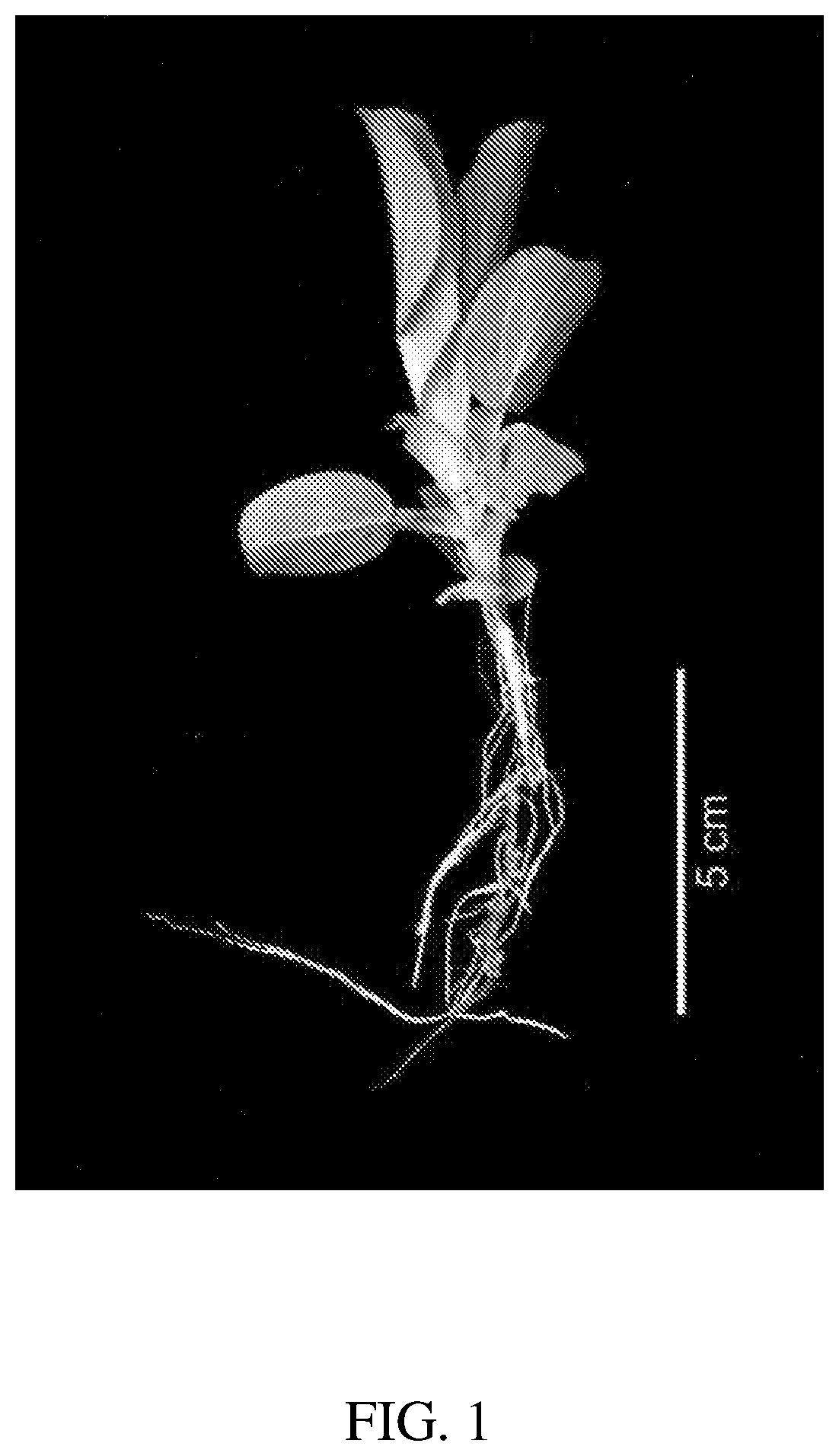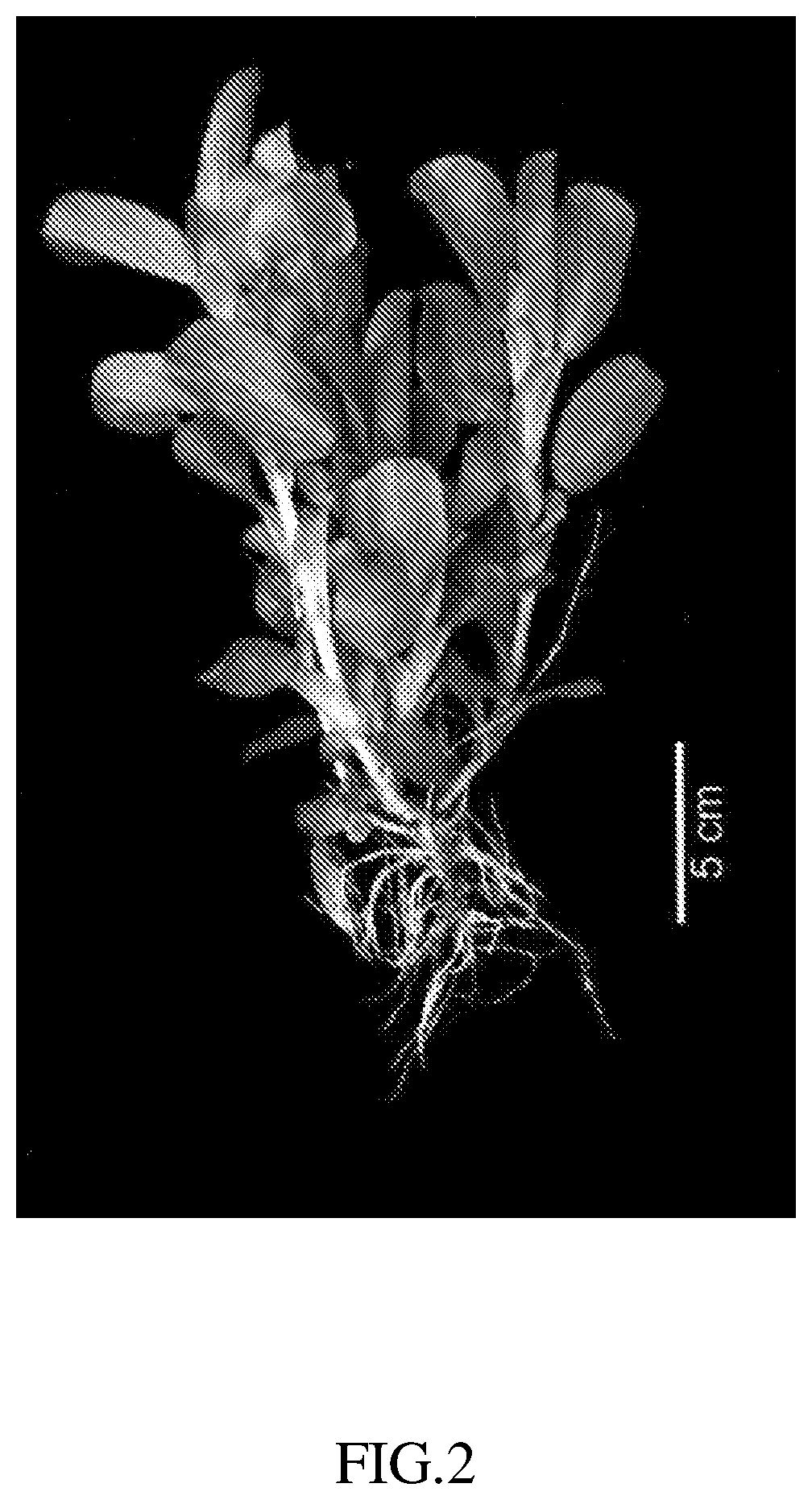Cultivated legume species ononis alopecuroides as a novel food source for livestock animals
a legume and livestock animal technology, applied in the field of new livestock animal food sources, can solve the problems of dioxin, chemical contamination incidents, and anxiety about the use of genetically modified crops
- Summary
- Abstract
- Description
- Claims
- Application Information
AI Technical Summary
Benefits of technology
Problems solved by technology
Method used
Image
Examples
example 1
Feasibility of Producing Ononis alopecuroides as Cultivated Species in Agriculture
[0040]In this experimental work, the seeding was done by drill, cutting by reaper and seed harvesting by a combine.
[0041]The results obtained from a field test are summarized in Table 1:
DryDryMatterPhenologicalMatterYieldAshProteinNDFADFHemicelluloseDigestibilitystage(%)(ton / ha)(%)(%)(%)(%)(%)ISTDWheat-initial31.82a4.94b7.2010.23c59.04a32.60b22.862.0grainfillingClover - 80%16.11b2.99c12.5113.16ab60.36a39.96a14.054.0floweringNew legume20.20b7.57a10.3014.24a50.73b33.09b27.969.280%flowering
[0042]It was found that the environmental requirements for optimal growth of Ononis alopecuroides are alluvial soil and at least 500 mm annual rainfall. The dry matter yield of the species at stage of 80% flowering out yields significantly the commercial clover at similar phonological stage and also a super agronomic bread wheat cultivar at the stage of initial grain filling. The protein content of vegetative biomass of...
example 2
The Effect of Inclusion of the Ononis alopecuroides Legume in High Yielding Dairy Cows' Ration on Production, Feed Efficiency, Rumen Environment, and Digestibility
[0045]Forty-two multiparous high yielding Israeli-Holstein dairy cows were divided into 2 treatment groups, each of 21 cows according to milk production, Day in Milk (DIM), parity and body weight (BW).The treatments were as follows: 1) Control—Cows were fed a standard Israeli milking-cow ration that contained 1.78 kg of oat hay per 20 kg DM (8.9% of ration—DM basis). 2) “Primono—Cows” were fed similar ration and the oat hay was substituted with 1.78 kg of Ononis alopecuroides hay, further called “Primono hay”, per 20 kg DM (8.9% of ration—DM basis). As used herein, the term “Primono Cows” refers to cows fed with “Primono hay”. The study continued 9.5 weeks as a continuous experiment. Cows were milked 3 times daily and yields were recorded electronically. Cows were weighed automatically after each milking with a walking ele...
PUM
 Login to View More
Login to View More Abstract
Description
Claims
Application Information
 Login to View More
Login to View More - R&D
- Intellectual Property
- Life Sciences
- Materials
- Tech Scout
- Unparalleled Data Quality
- Higher Quality Content
- 60% Fewer Hallucinations
Browse by: Latest US Patents, China's latest patents, Technical Efficacy Thesaurus, Application Domain, Technology Topic, Popular Technical Reports.
© 2025 PatSnap. All rights reserved.Legal|Privacy policy|Modern Slavery Act Transparency Statement|Sitemap|About US| Contact US: help@patsnap.com



